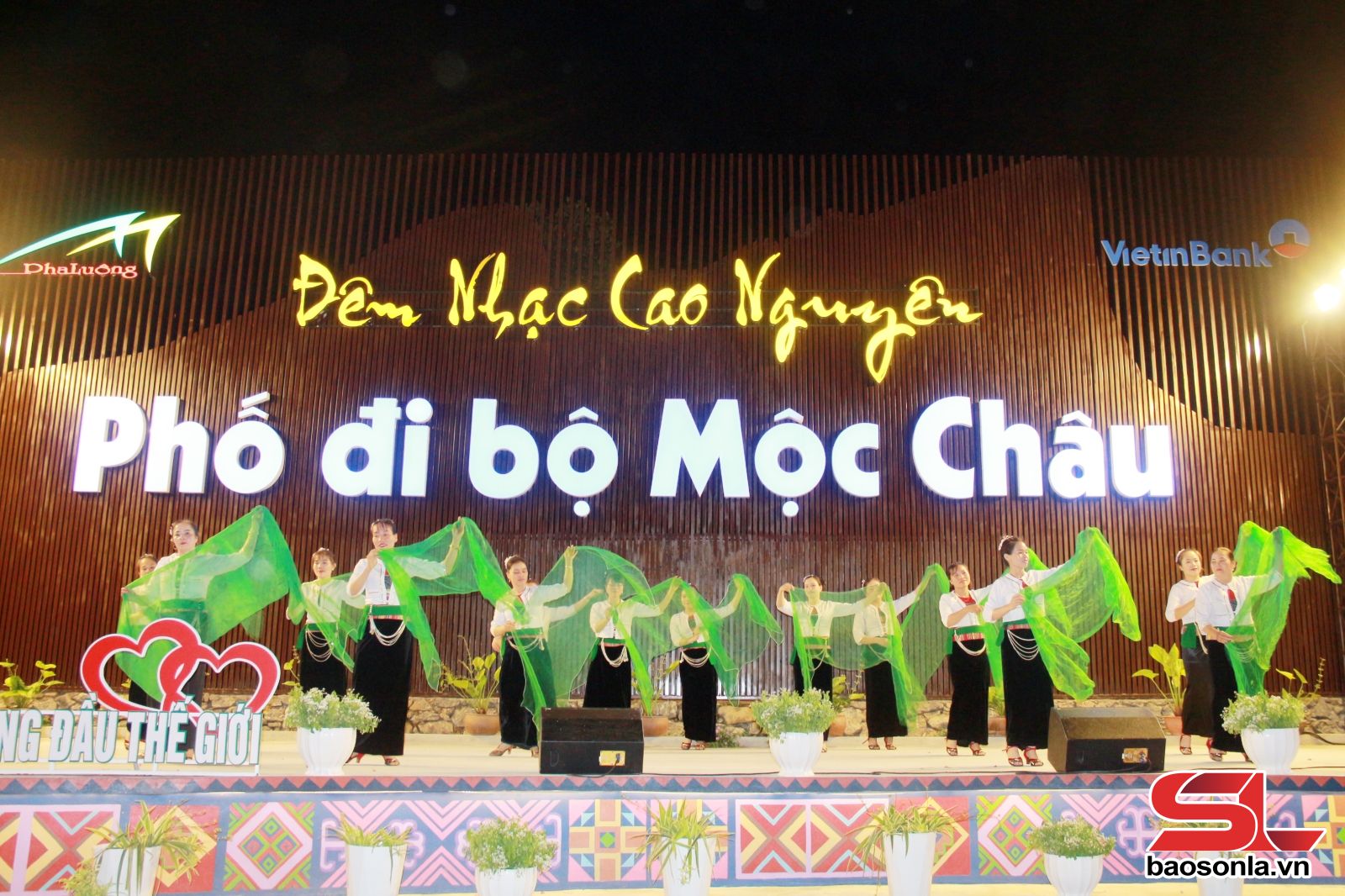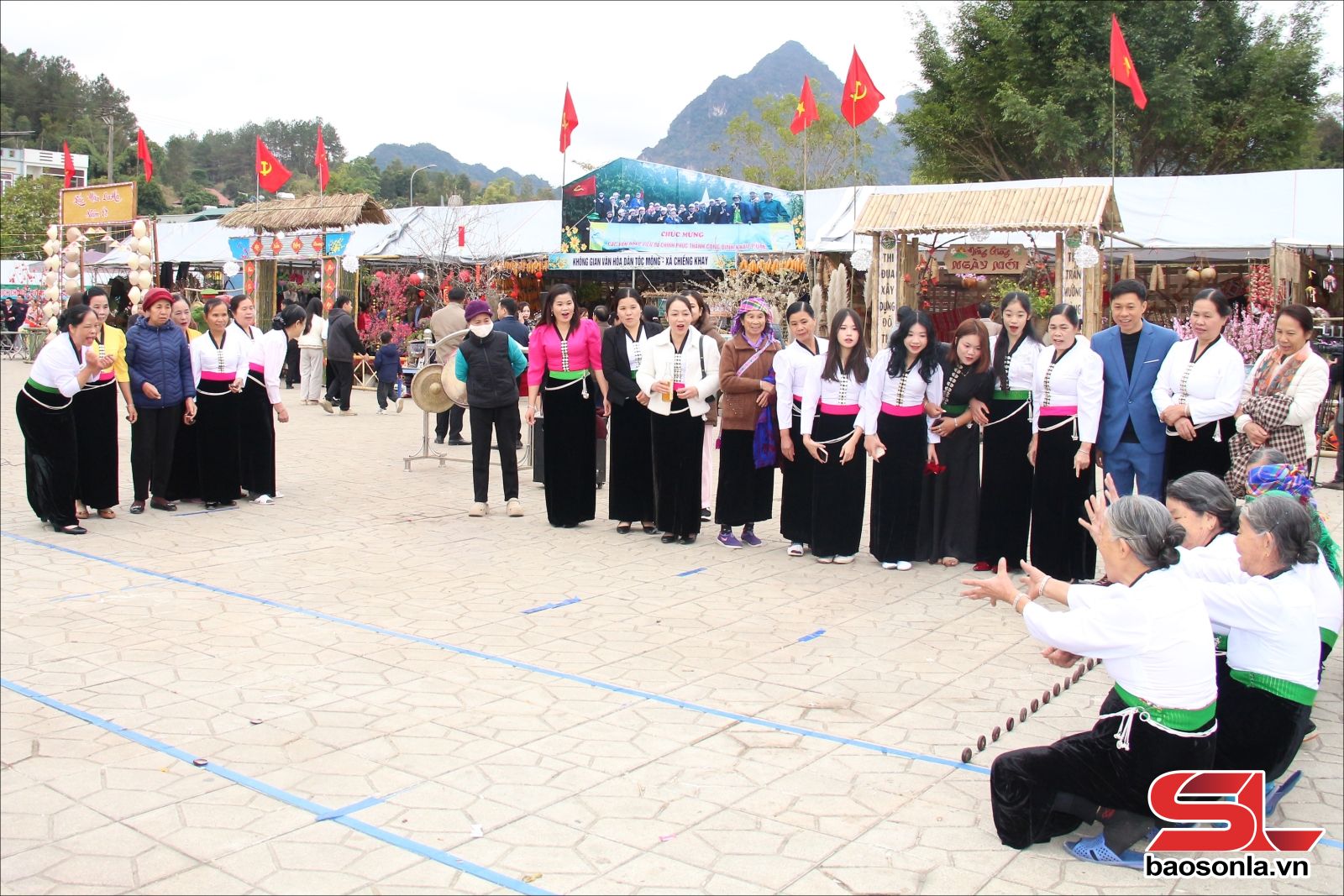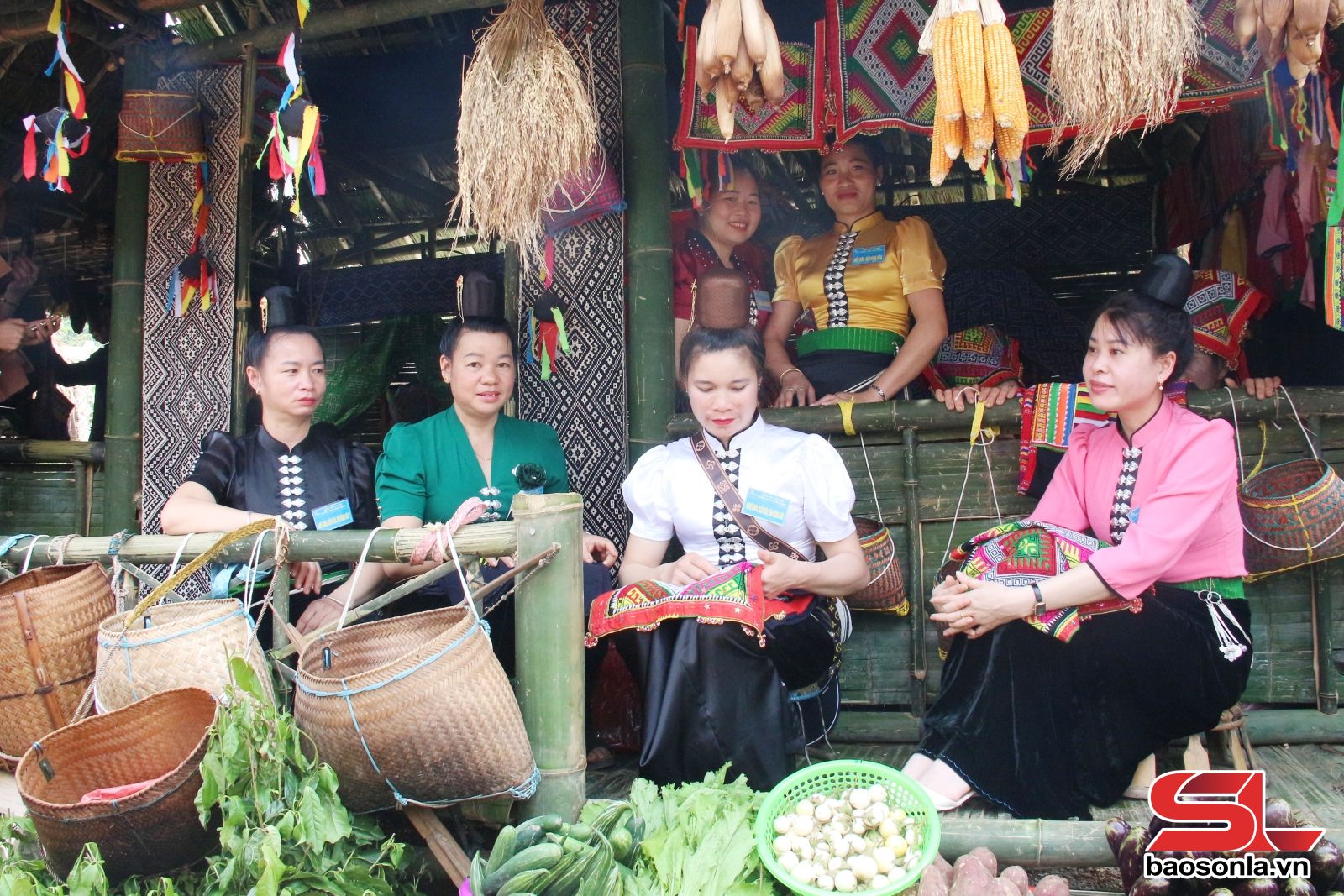
An ethnic cultural performance entertains visitors at the Moc Chau Night Market and Walking Street.
Van Ho—a gateway district to Son La—boasts numerous homestays reflecting the unique lifestyle of the Mong ethnic group. Among them, A Chu Homestay in Hua Tat hamlet is a favourite stop for visitors, especially foreigners. The homestay features traditional wooden houses of the Mong people, set in a lush natural environment with green gardens. Its simple, rustic architecture honours the group’s traditional cultural beauty while offering a uniquely appealing experience.
Trang A Chu, the homestay’s owner, shared: “Our homestay prioritises an authentic Mong cultural style combined with modern elements to offer tourists meaningful and enjoyable services and experiences. Visitors here can witness the unique aspects of Mong culture—from architecture and daily life to cuisine and spiritual culture.”
In Moc Chau, the lush highland plateau charms tourists not only with its stunning landscapes but also with its rich, vibrant cultural heritage. Home to 12 ethnic groups, Moc Chau’s cultural diversity is expressed through various traditional festivals and spiritual practices that have been preserved and elevated as tourism products. The township currently has seven nationally recognised intangible cultural heritages, including four specific to local ethnic groups. They are Het Cha Festival of the White Thai people, Khen (bamboo flute) art of the Mong people, floral embroidery art on costumes of the Mong Hoa people, and the rain-praying festival of the White Thai people.

A cultural space showcased during the 2025 Quynh Nhai Culture, Sports, and Tourism Week.
In Quynh Nhai, a culturally rich lakeside district, tourism has flourished in recent years by tapping into the vast potential of the Son La hydropower reservoir. During the early months of this year, the district becomes a popular springtime destination for visitors who come to pray at the spiritual tourism sites such as Nang Han Temple and Linh Son Thuy Tu Temple. They also enjoy the vibrant traditional boat racing festival, the Culture, Sports, and Tourism Week, and the rich cultural spaces of the local ethnic communities.
Traditional culture plays a central role in making Quynh Nhai a vibrant tourism destination. Notably, the district is home to several national intangible cultural heritages, including Pang A (Peace-Praying) ceremony of the La Ha people, Xe Pang A ceremony of the Khang people, the hair-washing and Kin Pang Then ceremonies, and the Xip Xi New Year festival of the White Thai people. These are regularly revived and showcased during local cultural and tourism events.
Doan Dong Duc, a visitor from Ho Chi Minh City, shared his experience at the 2025 Quynh Nhai Traditional Boat Racing Festival that “The lake’s natural scenery is majestic, the traditional festival is vibrant and rich in culture, and the locals are incredibly friendly and hospitable.”

The traditional Thai ethnic culture is recreated during an event in Moc Chau.
The cultural essence of Son La's ethnic minorities is being actively promoted and creatively integrated into tourism. Unique souvenir products such as handcrafted items and brocade textiles are featured at major tourist sites. Traditional festivals, folk songs, dances, music, and ethnic costumes are increasingly showcased at cultural-tourism events, adding distinctive charm to Son La’s tourism offerings.
In the first quarter of 2025, Son La welcomed 1.76 million tourists, generating over 1.98 trillion VND (72.26 million USD) in tourism revenue.
Pham Hong Thu, Deputy Director of the Department of Culture, Sports, and Tourism, emphasised that the agency regularly raise awareness among officials, party members, and the public about preserving traditional culture. “By proactively applying science-technology and digital economy, we aim to sustain and promote the cultural values of local ethnic groups. We focus on reviving traditional folk festivals, leveraging both national and UNESCO-recognised intangible cultural heritage in connection with local economic and tourism development,” he said.
With 17 national intangible cultural heritages and 96 historical-cultural relics and scenic sites, Son La’s cultural and historical assets span both time and space. These heritages are being preserved and revitalised in unique ways—turning them into valuable cultural capital that contributes to the province’s socio-economic development.























You have 500/500 characters left
Please enter 5 or more characters!!!